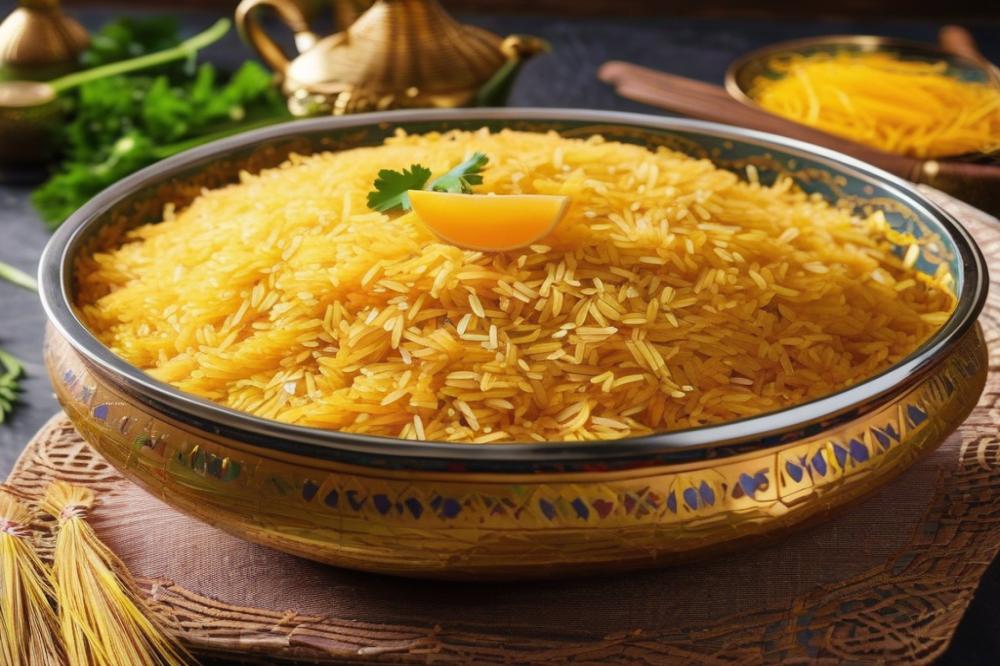The Secrets of Cooking Egyptian rice with vermicelli
Egyptian rice holds a special place within the realm of Middle Eastern cuisine. Its light and fluffy texture complements many dishes, making it a staple in households across Egypt and beyond. The preparation of rice, particularly in Egyptian cuisine, involves a blend of specific techniques that enhance its character and flavor. Understanding these methods is essential for anyone wishing to recreate this beloved food.
When it comes to flavor, the addition of vermicelli elevates the dish to another level. This pasta, often toasted and then mixed with rice, creates a delightful contrast in texture. Vermicelli recipes often highlight the harmony between the two ingredients, providing a richer, more satisfying meal. In essence, this combination is not just about rice and pasta; it’s about creating a versatile pilaf that can accompany many main entrees.
Mastering this traditional dish is important for anyone interested in the culinary arts. Knowing how to prepare rice properly is fundamental in many recipes. The techniques involved in cooking Egyptian rice with vermicelli can enhance your skills in the kitchen. Learning these can open doors to more complex dishes in the future. By achieving a balance of texture and flavor, you will find cooking can be both rewarding and enjoyable.
Understanding Egyptian Rice
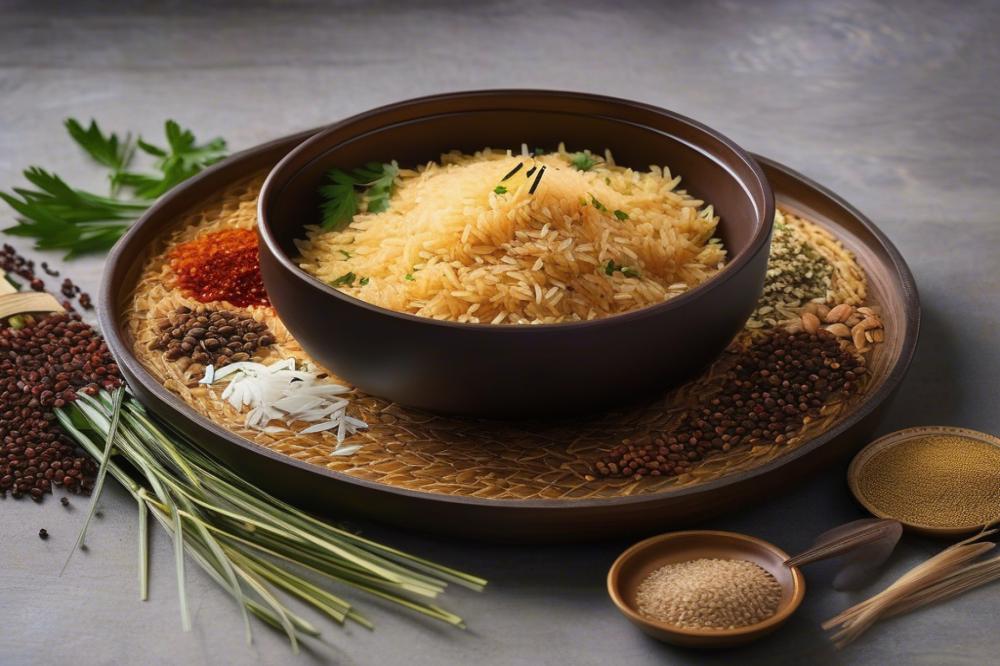
Rice, a staple in many cuisines, takes on special characteristics in Egypt. Known for its fluffy texture, it plays an important role in meals across the country. Often, this rice is cooked with vermicelli, creating a delightful combination that enhances its flavor. The grains are usually long and thin, which contributes to its unique consistency when prepared correctly.
In the wider scope of Middle Eastern cuisine, rice preparation can significantly differ. Various regions have distinct methods for cooking this grain. For instance, some recipes focus on a simple water and salt approach, while others incorporate rich spices and herbs. Pilaf is a popular style, where rice is sautéed briefly before water is added, allowing the grains to soak in flavor. Such techniques evolve based on local traditions and available ingredients.
Egyptian cuisine holds rice in high regard. It is often served alongside meat and vegetable dishes, making it a central part of many meals. Observing consumption trends reveals this dish is typically enjoyed during family gatherings or special occasions. People love to pair it with flavorful stews and sauces, creating a filling and satisfying dining experience.
Additionally, cooking techniques vary from household to household. Some families have their own special recipes passed down through generations. Kitchen tips from experienced cooks often highlight the importance of rinsing rice before cooking to achieve the ideal texture. This step helps remove excess starch, leading to a fluffy final product. Techniques involving vermicelli recipes usually emphasize toasting the pasta before adding it to the rice, enriching the dish’s complexity.
Ingredients and Cooking Instructions
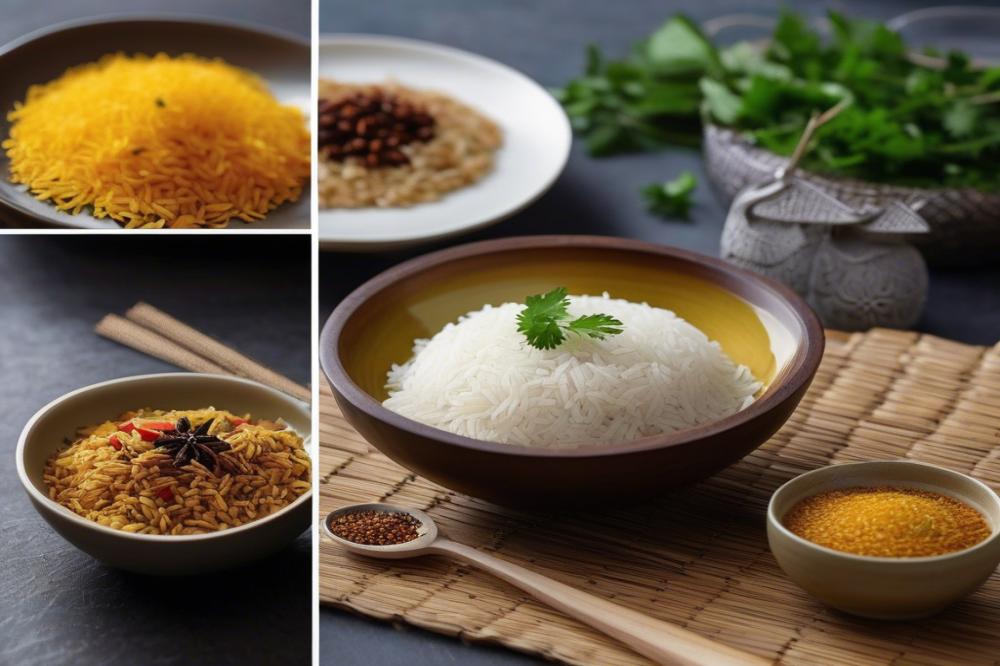
Detailed Ingredients List
- 1 cup Egyptian rice
- ½ cup vermicelli
- 2 tablespoons vegetable oil or ghee
- 2 cups water or chicken broth
- 1 teaspoon salt
- Optional spices: cumin, coriander
Step-by-Step Cooking Instructions
Start by rinsing the rice. Place it in a fine-mesh strainer and run cold water over it. Keep rinsing until the water runs clear. This step helps remove excess starch, promoting fluffy grains.
Next, focus on the vermicelli. Heat the oil or ghee in a medium-sized pot over medium heat. Once hot, add the vermicelli. Stir often while cooking. The goal is to achieve a golden brown color, which adds flavor to the dish.
Combine the rinsed rice with the toasted vermicelli. Pour in the water or chicken broth next. Adding broth will enhance the flavor and richness of the dish. Also, sprinkle in the salt. If you choose, now is the time to add optional spices like cumin or coriander for extra warmth.
Bring the mixture to a boil and then reduce the heat. Cover the pot with a lid and let it simmer. Cooking time is typically about 15-20 minutes, but keep an eye on it. When the water is absorbed and the rice is tender, the dish is nearly ready.
After cooking, remove the pot from heat and let it sit, covered, for another few minutes. This allows the rice preparation to finish steaming. Use a fork to fluff it before serving, making sure to mix the vermicelli evenly into the flavorful rice.
This traditional dish reflects the beauty of Middle Eastern cuisine. It’s perfect as a side with grilled meats or stews. Follow these kitchen tips for the best results, and enjoy your homemade pilaf!
Nutritional Information
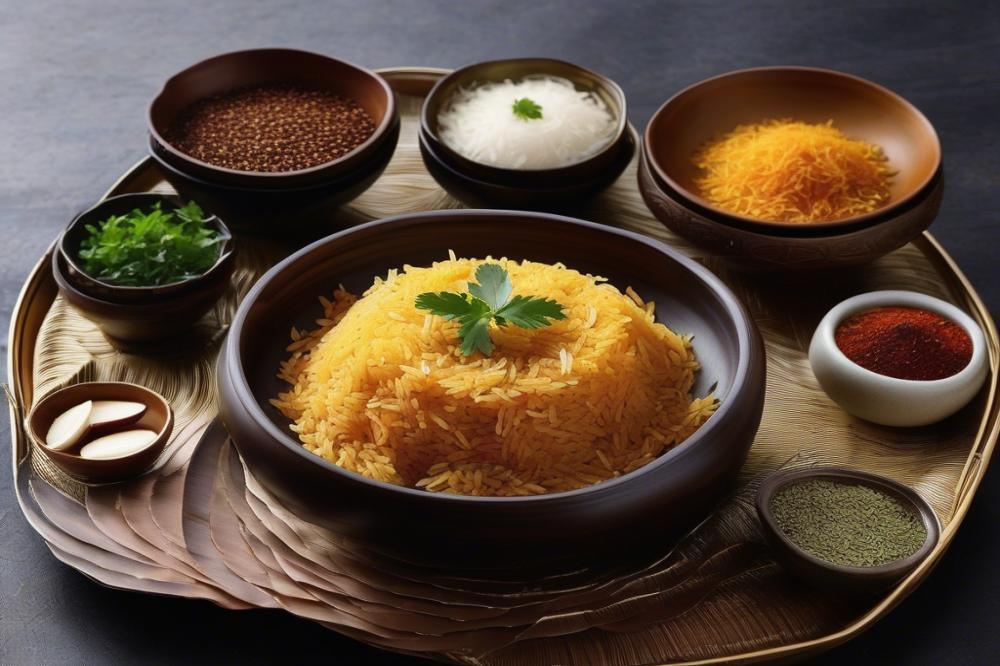
Nutritional breakdown of each ingredient
Upon examining the components of this traditional dish, rice and vermicelli stand out as staples in Middle Eastern cuisine. A typical serving of white rice boasts around 205 calories, offering 4.3 grams of protein while containing minimal fat. This form of carbohydrate serves as a primary fuel source for the body. Vermicelli, on the other hand, provides approximately 220 calories per serving and contributes about 5 grams of protein. It’s low in fat as well, making it an excellent addition.
Additionally, spices and herbs often enhance flavor and provide antioxidant benefits. Ingredients like salt, pepper, and cumin are common in Egyptian cuisine. Their nutritional value, while sometimes overlooked, plays a key role in a balanced meal.
Health benefits of rice and vermicelli
Both rice and vermicelli offer significant health benefits. Whole grain rice is a good source of fiber. This helps with digestion and can promote a feeling of fullness. However, white rice offers simplicity in preparation, making it easier to digest for those with sensitive stomachs.
Vermicelli adds texture and visual appeal. This pasta contains carbohydrates that supply rapid energy, an ideal choice for those who lead active lifestyles. It is also often fortified with vitamins, depending on the type.
Tips on balancing the dish with proteins and vegetables
To make the meal more nourishing, consider adding proteins like chicken, beef, or chickpeas. These can enhance the overall flavor while providing the body with essential amino acids. cooking techniques vary here; you may sauté the protein in spices before adding it to the rice.
Vegetables should not be forgotten as they add color and nutrients. Bell peppers, carrots, or peas are excellent choices. Incorporating them can boost the fiber content of the dish. When preparing rice, adding a variety of vegetables can transform the dish into a hearty pilaf.
Experimenting with different mixtures allows personal tastes to shine through. Lastly, always consider serving a side salad or yogurt, as they complement the flavorful rice well. This will lend a refreshing balance and ensure the meal is delightful and nutritious.
Cooking Techniques and Kitchen Tips
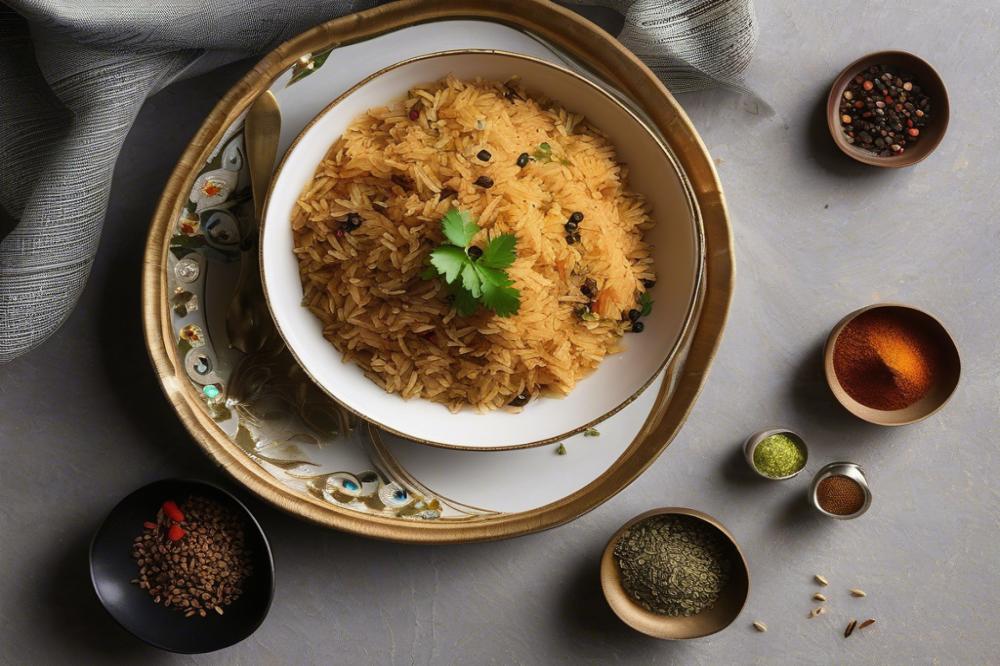
Techniques for Perfect Rice Preparation
Every cook should understand the basics of rice preparation. Rinsing the rice under cold water helps remove excess starch. This step is crucial for achieving the perfect texture. Soak the grains for about 30 minutes. This method softens the rice and accelerates cooking time. Use a ratio of one part rice to two parts water for most recipes. Keeping this proportion consistent yields satisfying results.
Tips for Achieving Fluffy, Flavorful Rice
Fluffiness enhances the overall appeal of any dish. Adding a small amount of salt to the water can elevate the flavor significantly. After cooking, let the rice rest with the lid on for about ten minutes. This resting period allows the steam to distribute evenly. Utilizing a fork to fluff the rice before serving will separate the grains nicely, avoiding clumps.
Recommended Cookware for Making Egyptian Rice
Choosing the right pot is another key to success. A heavy-bottomed pot or a non-stick pan works well for this traditional dish. An even heat distribution helps prevent burning or sticking. A glass lid offers a view of the cooking process without letting steam escape. Consider investing in a rice cooker for convenience; it simplifies the cooking process and often produces excellent results.
Suggestions for Enhancing the Dish with Spices
Spicing up the dish can transform it into a culinary delight. Cumin and coriander are popular choices in Middle Eastern cuisine. Toasting these spices briefly in oil before adding rice releases their aromatic flavors. Adding a pinch of cinnamon can offer a unique twist. Finally, garnish with fresh herbs like parsley or cilantro for a burst of freshness. Overall, these enhancements can make your pilaf even more irresistible.
Variations and Serving Suggestions
Common Variations of Egyptian Rice with Vermicelli
Different styles exist when it comes to this traditional dish. For instance, some people add small pieces of sautéed vegetables. Bell peppers, onions, and peas can enhance both flavor and color. Another option includes using spices like cumin or cinnamon for extra warmth and depth. Adding golden raisins can provide sweetness, creating a delightful contrast. Alternatively, some recipes incorporate chicken or lamb, making it a more substantial meal. These variations demonstrate the flexibility of rice preparation in Egyptian cuisine.
How to Serve as Part of a Larger Middle Eastern Meal
Serving this dish as part of a larger meal is quite common. You can place it alongside grilled meats or roasted vegetables for a balanced plate. Many people also enjoy it with fresh salads, like fattoush or tabbouleh, for a refreshing touch. Yogurt or tahini sauce serves as a great accompaniment too, adding creaminess and chill. When hosting gatherings, make family-style portions to encourage sharing. This communal approach is typical in Middle Eastern cuisine.
Pairing Ideas with Traditional Egyptian Dishes
This flavorful rice pairs wonderfully with many traditional dishes. Consider serving it with koshari, a popular Egyptian comfort food. It complements fish, like grilled seabass, particularly well. Additionally, served alongside a rich stewed dish, like moussaka, gives a satisfying contrast. For more adventurous eaters, pairing it with spicy mezze offers an exciting blend of flavors. Using this rice as a base for additional proteins boosts the overall meal experience. These pairing ideas help showcase the versatility of the main dish while celebrating the essence of Egyptian cuisine.
Final Thoughts on Cooking Egyptian Rice with Vermicelli
Egyptian rice holds a special place in the hearts of many. It is more than just a dish; it represents a vital part of the culture and daily life in Egypt. Families often gather around to enjoy meals that include this beloved side. Preparing rice with vermicelli complements many traditional dishes, making it a staple at celebrations and everyday meals alike.
Don’t hesitate to try your hand at this recipe. Engaging with Egyptian cuisine is an exciting venture filled with flavors and textures. You can create something delicious and rewarding while discovering a rich culinary heritage. Cooking can be a fun experience, especially when exploring unique international dishes.
Mastering various cooking techniques will bring you closer to making flavorful rice dishes. Over time, you will gain confidence in preparing not only this recipe but also a variety of others. Each step taken in the process adds to your culinary skills. Enjoy the journey as you learn and create. Happy cooking!

